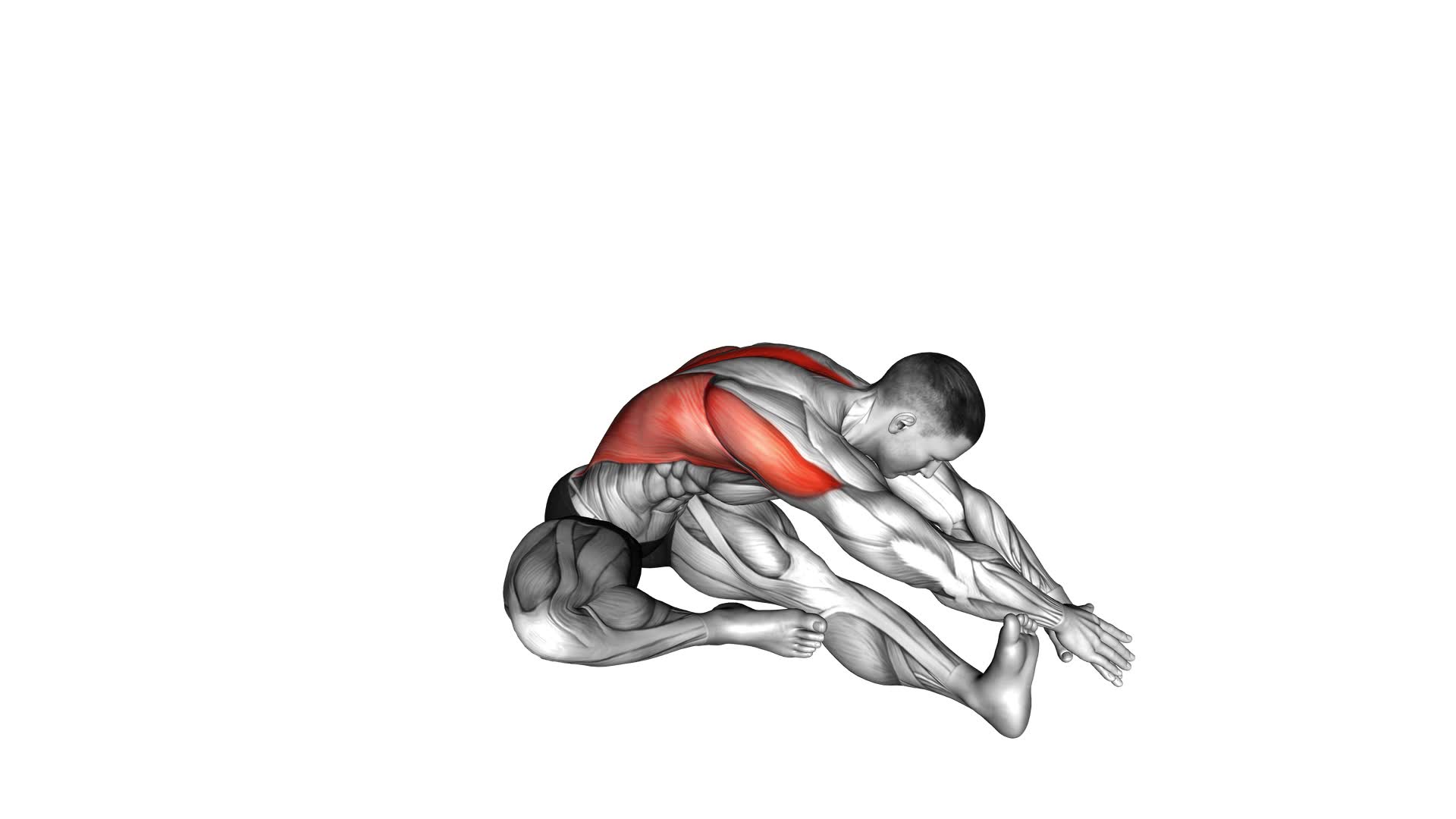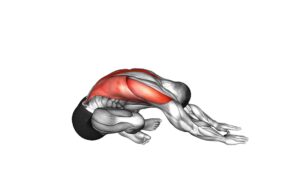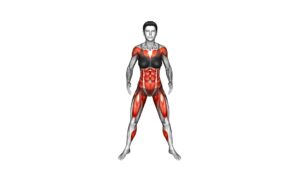Sitting Side Reach Stretch – Video Exercise Guide & Tips

In this video exercise guide, you'll discover the benefits and proper form for the Sitting Side Reach Stretch.
Watch This Exercise Video
Whether you're a beginner or advanced fitness enthusiast, there are modifications and tips to suit all levels.
Avoid common mistakes and enhance the effectiveness of this stretch with expert advice.
Get ready to improve your flexibility and posture with variations and advanced progressions.
Let's dive into this comprehensive guide and unlock the full potential of the Sitting Side Reach Stretch.
Key Takeaways
- The sitting side reach stretch improves flexibility and range of motion in the upper body.
- It targets muscles in the shoulders, back, and sides, relieving tension and tightness.
- The stretch enhances overall posture and alignment, increasing the ability to reach and rotate the torso.
- Modifications can be made for different fitness levels, such as decreasing or increasing the range of motion, using resistance bands or weights, and adjusting the duration of the stretch.
Benefits of the Sitting Side Reach Stretch
The sitting side reach stretch offers numerous benefits for improving flexibility and range of motion in your upper body. This stretch primarily targets the muscles in your shoulders, back, and sides, helping to relieve tension and tightness. By regularly performing the sitting side reach stretch, you can enhance your overall posture and alignment, as well as increase your ability to reach and rotate your torso. Additionally, this stretch can improve your spinal mobility and help to prevent or alleviate lower back pain.
Proper form is essential when performing the sitting side reach stretch to maximize its benefits and minimize the risk of injury. Start by sitting on the floor with your legs extended in front of you. Keep your back straight and your core engaged throughout the stretch. Begin by reaching your right arm up towards the ceiling, then slowly lean to the left, feeling a gentle stretch along the right side of your body. Hold this position for 15-30 seconds, breathing deeply and maintaining a relaxed state. Repeat on the other side.
By incorporating the sitting side reach stretch into your regular exercise routine, you can experience improved flexibility, enhanced range of motion, and a stronger upper body.
Now let's move on to discussing the proper form and technique for the stretch.
Proper Form and Technique for the Stretch
To perform the sitting side reach stretch properly, sit on the floor with your legs extended and engage your core while reaching your arm up towards the ceiling and slowly leaning to the side. This stretch targets the muscles in your sides, back, and shoulders, promoting flexibility and range of motion.
Here are three key points to keep in mind when performing this stretch:
- Maintain proper posture: Sit up tall with your spine straight and shoulders relaxed. Avoid slouching or rounding your back to ensure an effective stretch.
- Engage your core: By activating your core muscles, you provide stability and support to your spine, allowing for a deeper and safer stretch.
- Reach towards the ceiling: As you lean to the side, focus on reaching your arm towards the ceiling. This lengthens the muscles on the opposite side, enhancing the stretch and increasing flexibility.
Stretching regularly has numerous benefits, including improved flexibility, increased blood flow to the muscles, reduced muscle tension, and enhanced athletic performance. Flexibility is crucial for everyday activities and exercise, as it allows for greater joint mobility and reduces the risk of injuries.
Now, let's explore modifications for different fitness levels and how to adapt this stretch to suit individual needs.
Modifications for Different Fitness Levels
For different fitness levels, modify the sitting side reach stretch by adjusting the range of motion and intensity. There are various modifications you can make to increase or decrease the difficulty of this exercise.
If you're a beginner or have limited flexibility, you can start by decreasing the range of motion. Instead of reaching all the way to the floor, you can reach towards your knee or shin. This will still provide a stretch to your side muscles without putting too much strain on your body.
To increase the difficulty of the sitting side reach stretch, you can try extending your arm further towards the floor. This will increase the stretch and challenge your muscles even more. You can also hold the stretch for a longer period of time to intensify the exercise.
Another way to modify this exercise is by using a resistance band or weight. By holding a resistance band in your hand or placing a weight on your thigh, you can add resistance and make the exercise more challenging. This will help to strengthen your side muscles and improve your overall fitness level.
Remember to listen to your body and only push yourself to a comfortable level. It's important to find the right modifications that suit your fitness level and goals.
Common Mistakes to Avoid
When modifying the sitting side reach stretch for different fitness levels, what common mistakes should you avoid?
Proper alignment is crucial when performing this stretch to avoid injury and maximize its benefits. Here are some common mistakes to watch out for:
- Poor posture: Slouching or rounding your back during the stretch can strain your spine and decrease the effectiveness of the exercise. Keep your spine straight and engage your core muscles to maintain proper alignment.
- Overreaching: Avoid extending your arm beyond your range of motion. Overreaching can put excessive strain on your shoulder joint and lead to discomfort or injury. Instead, focus on stretching to a comfortable point and gradually increase your range over time.
- Neglecting the opposite side: It's important to stretch both sides of your body evenly to maintain balance and prevent muscle imbalances. Many people tend to favor one side over the other, but this can lead to postural issues and increased risk of injury. Be sure to perform the stretch on both sides equally.
Tips to Enhance the Effectiveness of the Stretch
To enhance the effectiveness of the sitting side reach stretch, focus on maintaining proper body alignment throughout the exercise. Keep your spine straight and shoulders relaxed, avoiding any slouching or hunching.
Additionally, pay attention to your breathing technique, taking slow, deep breaths to help relax your muscles and increase the stretch.
Proper Body Alignment
Align your body properly to maximize the effectiveness of the stretch.
Maintaining proper body alignment during the sitting side reach stretch is crucial for achieving the desired results. Here are some tips to help you maintain proper body alignment:
- Sit up straight: Start by sitting with your back straight and your shoulders relaxed. Avoid slouching or hunching forward, as this can limit the range of motion and effectiveness of the stretch.
- Engage your core: Activate your abdominal muscles by gently pulling your belly button towards your spine. This will help stabilize your spine and maintain proper alignment throughout the stretch.
- Keep your head aligned: Ensure that your head is in line with your spine. Avoid tilting or dropping your head forward or to the side, as this can strain your neck and affect the effectiveness of the stretch.
Breathing Techniques
To enhance the effectiveness of the stretch, focus on incorporating proper breathing techniques. Breathing exercises and relaxation techniques can greatly improve your stretching experience.
As you perform the sitting side reach stretch, take slow, deep breaths in through your nose and exhale through your mouth. This deep breathing helps to oxygenate your muscles and promotes relaxation, allowing you to stretch further and with more ease.
As you inhale, visualize your breath expanding your ribcage and filling your lungs. As you exhale, imagine releasing any tension or tightness in your body.
Variations and Advanced Progressions
Now let's explore some variations and advanced progressions to challenge your side reach stretch.
You can try the challenging side reach, which involves extending your arm even further and reaching for a higher point.
Another option is the modified side stretch, where you can add a twist by rotating your torso towards the side you're stretching.
For those looking for more advanced options, there are advanced progressions that involve incorporating props or increasing the intensity of the stretch.
Challenging Side Reach
You can challenge yourself with variations and advanced progressions of the Side Reach exercise. Here are three challenging modifications and advanced side stretches to try:
- Seated Side Bend with Resistance Band: Attach a resistance band to a stable anchor and hold the other end in your hand. Sit with your legs extended and perform the Side Reach while pulling the band towards your side.
- Standing Side Reach with Dumbbells: Stand with your feet hip-width apart, holding a dumbbell in each hand. Reach one arm overhead and bend sideways, feeling a stretch along your side. Return to the starting position and repeat on the other side.
- Side Plank with Reach: Start in a side plank position, with your forearm on the ground and your body in a straight line. Lift your top arm up and reach towards the ceiling, then lower it back down. Repeat on the other side.
These challenging variations will help enhance your core strength and flexibility while targeting your side muscles.
Modified Side Stretch
For a modified side stretch, try incorporating variations and advanced progressions to target your side muscles and enhance core strength and flexibility. The modified side stretch is a great exercise to engage the obliques and improve overall stability.
To add variations, you can use a resistance band or dumbbell to increase the intensity of the stretch. Hold the band or dumbbell with both hands and lean to the side, feeling the stretch in your obliques.
Another option is to perform the modified side stretch on an unstable surface, such as a balance board or stability ball, to challenge your core even more.
Remember to maintain proper form and breathe deeply throughout the exercise.
These side reach modifications will help you take your side stretch to the next level and maximize your results.
Advanced Progression Options
To further challenge your core and enhance the effectiveness of the sitting side reach stretch, incorporate variations and advanced progressions using different equipment and intensities. Here are some advanced modifications and stretching techniques you can try:
- Resistance Band Side Reach: Attach a resistance band to a stable anchor point and hold the other end in your hand. Perform the side reach stretch while maintaining tension on the band, adding resistance to the exercise.
- Weighted Side Reach: Hold a dumbbell or kettlebell in your hand while performing the side reach stretch. The added weight will increase the intensity of the stretch and engage your muscles even further.
- Stability Ball Side Reach: Sit on a stability ball instead of a chair or bench. The unstable surface of the stability ball will challenge your balance and activate more muscles during the stretch.
Incorporating these advanced modifications and stretching techniques will take your sitting side reach stretch to the next level, helping you achieve greater flexibility and strength in your core muscles.
Frequently Asked Questions
Can the Sitting Side Reach Stretch Help Improve Flexibility in the Lower Back?
Yes, the sitting side reach stretch can definitely help improve flexibility in your lower back. By incorporating this stretch into your routine, you can increase the range of motion in your spine and strengthen the muscles in your back.
Additionally, there are variations of the sitting side reach stretch that can target different areas of your back and sides, providing a well-rounded workout for your entire core.
Is It Safe to Perform the Sitting Side Reach Stretch if You Have a History of Lower Back Pain?
If you have a history of lower back pain, it's important to consider the safety of performing the sitting side reach stretch.
Before attempting this exercise, it's recommended to consult with a healthcare professional or a qualified exercise specialist who can assess your individual situation.
They can provide modifications or alternative exercises that can help improve flexibility in the lower back while minimizing the risk of aggravating your pain.
Safety should always be a priority when engaging in any exercise routine.
How Many Times a Week Should the Sitting Side Reach Stretch Be Performed to See Results?
To achieve results from the sitting side reach stretch, you need to know how often to perform it.
The frequency with which you should do this stretch depends on your fitness goals and current flexibility. However, to see noticeable results, it's generally recommended to perform the sitting side reach stretch at least three times a week.
Consistency is key, so make sure to incorporate this stretch into your regular exercise routine for maximum benefits.
Can the Sitting Side Reach Stretch Be Done as a Warm-Up Before Other Exercises?
Yes, the Sitting Side Reach Stretch can be done as a warm-up before other exercises. It helps to loosen up your muscles and increase flexibility, preparing your body for a more intense workout.
This stretch targets your oblique muscles and improves your range of motion.
Are There Any Specific Breathing Techniques That Should Be Used During the Sitting Side Reach Stretch?
During the sitting side reach stretch, it's important to focus on your breathing techniques. Take deep breaths in and exhale as you reach towards the side. This will help you relax and deepen the stretch. Remember to breathe slowly and steadily throughout the exercise.
If you find it difficult to reach to the side, you can modify the stretch by bending your elbow and resting it on your knee. This will still provide a good stretch for your side muscles.
Conclusion
In conclusion, the sitting side reach stretch is a beneficial exercise for improving flexibility and mobility in the upper body.
By following proper form and technique, and making modifications based on fitness level, individuals can avoid common mistakes and enhance the effectiveness of the stretch.
Additionally, variations and advanced progressions can be incorporated to further challenge the muscles and continue progressing in flexibility.
Incorporating this stretch into your routine can help improve overall flexibility and range of motion.

Author
Years ago, the spark of my life’s passion ignited in my mind the moment I stepped into the local gym for the first time. The inaugural bead of perspiration, the initial endeavor, the very first surge of endorphins, and a sense of pride that washed over me post-workout marked the beginning of my deep-seated interest in strength sports, fitness, and sports nutrition. This very curiosity blossomed rapidly into a profound fascination, propelling me to earn a Master’s degree in Physical Education from the Academy of Physical Education in Krakow, followed by a Sports Manager diploma from the Jagiellonian University. My journey of growth led me to gain more specialized qualifications, such as being a certified personal trainer with a focus on sports dietetics, a lifeguard, and an instructor for wellness and corrective gymnastics. Theoretical knowledge paired seamlessly with practical experience, reinforcing my belief that the transformation of individuals under my guidance was also a reflection of my personal growth. This belief holds true even today. Each day, I strive to push the boundaries and explore new realms. These realms gently elevate me to greater heights. The unique combination of passion for my field and the continuous quest for growth fuels my drive to break new ground.



